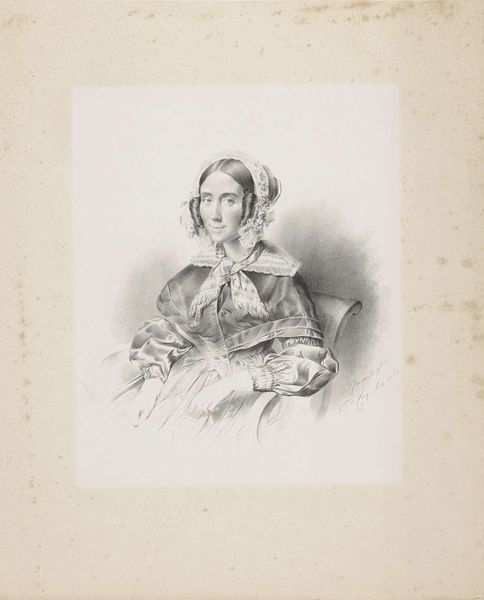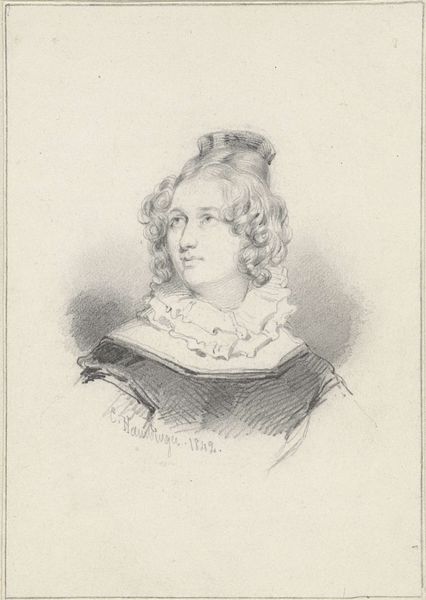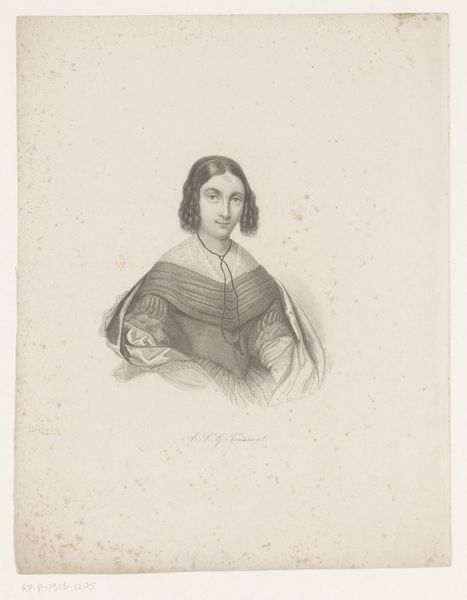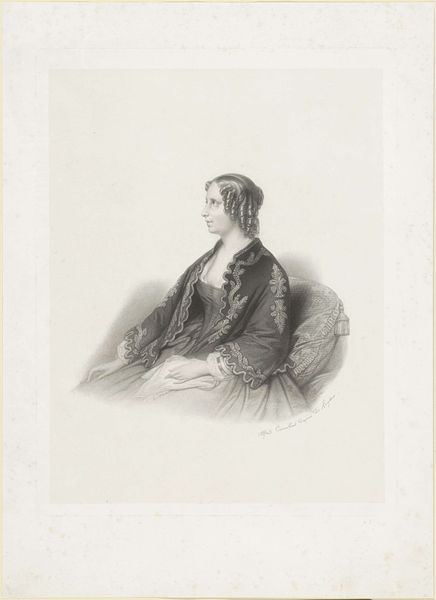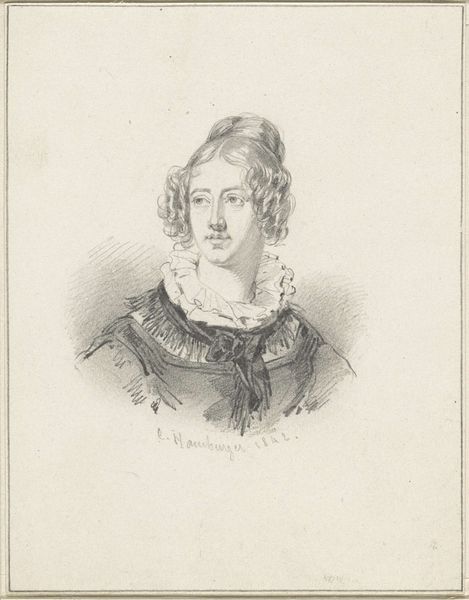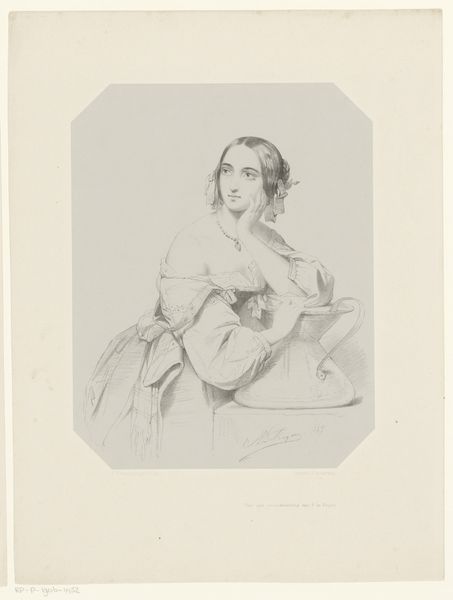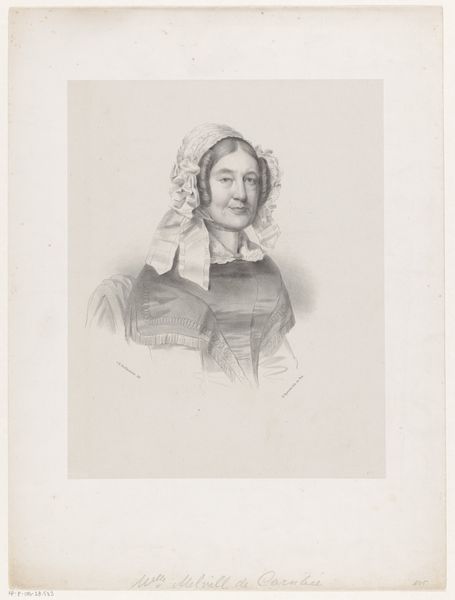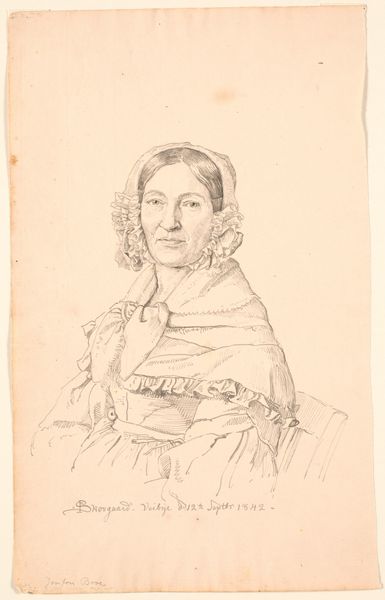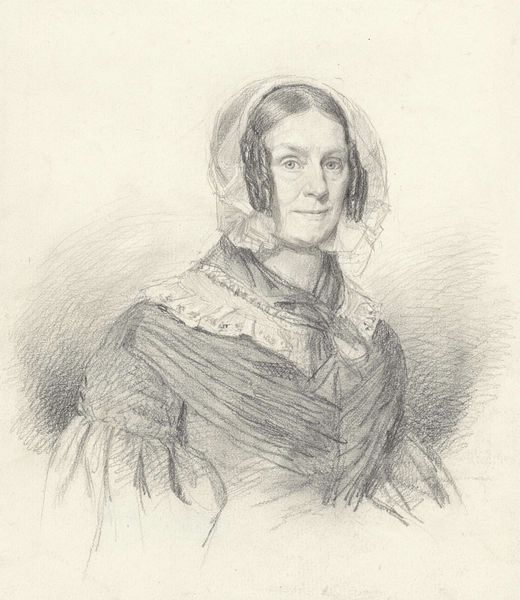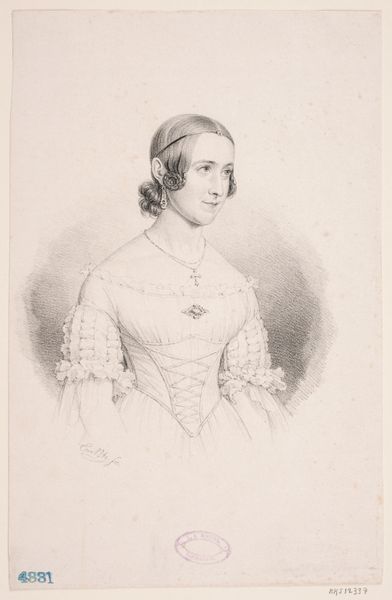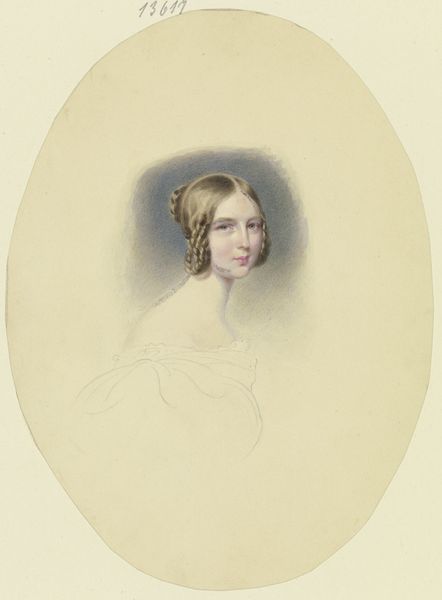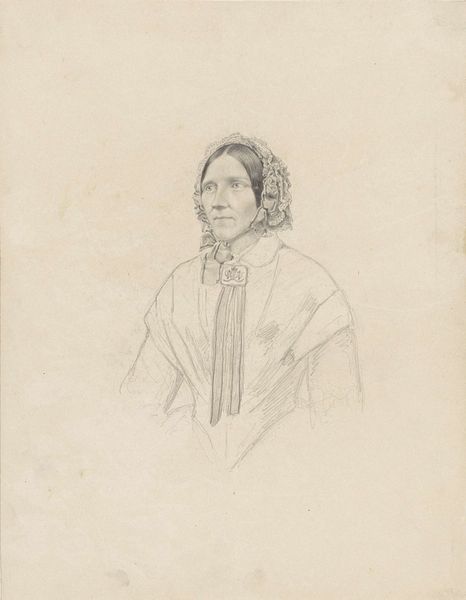
Dimensions: height 214 mm, width 178 mm
Copyright: Rijks Museum: Open Domain
Curator: Today we're observing "Portret van mevrouw Van Hamel," a pencil drawing dating roughly from 1829 to 1888, by Johan Heinrich Neuman. It's currently held at the Rijksmuseum. Editor: My first impression is one of quiet dignity. There’s a remarkable delicacy to the pencil work, but also a sense of formality in the pose and attire. It feels reserved, almost melancholic. Curator: The drawing’s composition directs us immediately to the sitter’s face. Neuman employs delicate hatching to render the nuances of her skin, giving particular attention to the fall of light on her features. Observe how the lines soften around the edges, creating a subtle sfumato effect that enhances the overall sense of gentle realism. Editor: I’m drawn to how the bonnets and ribbons frame her face. This type of portraiture in the 19th century served particular social functions. It wasn't just about representation; it was about constructing and solidifying bourgeois identity and status, defining gendered roles in a rapidly changing society. The bows and lace signal her social standing, of course, but perhaps also hint at performative femininity of the era. Curator: You’re right; the formal attire signifies status. Yet, I’m compelled by the technical mastery on display. Notice the artist's control of line weight to convey textures: the smooth silk of the dress, the delicate lace of the bonnet, and the soft waves of the sitter’s hair. These contrasts create a rich visual experience, inviting careful consideration. Editor: And considering the lack of vibrant color, that's impressive! It prompts reflection on who this woman was beyond her representation, her lived experience and her place within 19th century social structures, the challenges and opportunities she faced as a woman in that era. This seemingly simple portrait encapsulates a moment within evolving gender dynamics. Curator: It's a work that demands a contemplative viewing, asking us to consider its formal beauty. Editor: Yes, and perhaps reflect on what such images tell us about the era in which they were made and the assumptions about gender and identity encoded within them.
Comments
No comments
Be the first to comment and join the conversation on the ultimate creative platform.
